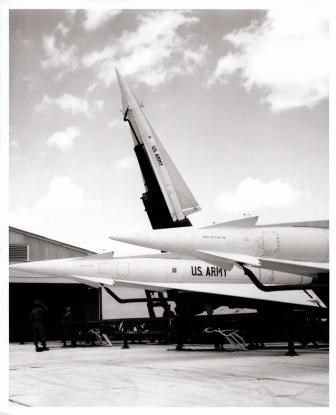By: Friedrich Seiltgen
“It is insane that two men, sitting on opposite sides of the world, should be able to decide to bring an end to civilization.” – John F. Kennedy, 27 October 1962
Tucked away amongst the gators and snakes of the Florida Everglades lies a relic of the Cold War.
Nike Hercules Missile Site HM-69, or Battery “A,” sits as it was left to the National Park Service in 1979. The site lies near the entrance to Everglades National Park on former farmland known as the “Hole in The Donut.” As you enter the park, you’ll be directed to the Nike Missile Site via a long, straight, paved, road (more about this later). After a few miles, you’ll pass a large pink building. This was once the battery control building and radar site.
Constructed in 1964 during the height of the cold war and closed in 1979, HM-69 was the westernmost Nike site in the Homestead – Miami Defense Area. The battery consisted of Hawk missiles as well as an Anti-Tactical Ballistic Missile version of the Nike Hercules, which was designed to shoot down incoming missiles fired from Cuba. The Nike Hercules was the Patriot Missile of its time!
The site was part of the 2nd Battalion, 52ndAir Defense Artillery, which was awarded the Army Meritorious Service Unit Commendation for deterrence, rather than engaging an enemy in battle. The unit consisted of about 140 soldiers who were part of the Homestead – Miami Defense area. Instead of silos, the missiles were in above-ground barns on raised pads, as the site sits near a swamp. The site was constructed as a result of the Cuban Missile Crisis. Until then, the U.S. was concerned with a strike coming over the North Pole from the Soviet Union, and defenses were primarily found in the north. The Cuban Missile Crisis showed that South Florida was America’s “Achilles’ heel.”
In all, there were 265 Nike sites in the United States. HM-69 consisted of four Nike batteries and eight Hawk Missile batteries located from North Miami to Key West. HM-69 was the last Nike site to be deactivated in 1979.
Originally, the site was setup outside of the current boundaries of the park. The local farmers told the Army the location was bad, as it tended to flood. The government ignored the warnings of the locals (shocking, I know!). When the rainy season came, the site flooded, and the soldiers had to rescue the missiles quickly from the swamp! The site was then moved to higher ground at its present position. To ensure the flood fiasco wouldn’t happen again, the Army dredged out an area south of the site for fill dirt to raise the area even further. The dredging created a large lake. (more on this later).
The Battery consisted of three “barns” equipped with six missiles each. Three Nike missiles were outside on their launch pads with three spare missiles stored in the barn. The missiles were rotated frequently due to the high humidity of the swamp. Next to the barn buried in the earth berm was a control bunker. The troops stationed there were reportedly happy with the constant practice drills. After the missiles were armed and ready for launch, the soldiers would enter the bunker, and it was the only building with air conditioning!
The Nike Hercules missile was 41 feet long, weighed in at 10,690 pounds, and had a maximum speed of 2094 mph or Mach 3.65. The Nike Hercules was equipped with both the conventional T45 High Explosive warhead as well as the W31 – 20 kiloton nuclear warhead. Since the Nike is primarily a surface to air missile, why was it equipped with a nuke? Our guide explained that the conventional warhead was used against single aircraft, while the nuke warhead would be used if a wave of bombers was incoming. The nuke would be launched and detonate above the fleet with the ensuing shock wave destroying everything in its path!
As you can imagine, duty in the middle of a swamp wasn’t exactly the greatest. The soldiers assigned to the battery were prone to doing a little drinking and drag racing to combat the boredom. This is where that long, straight, paved, road comes into play! When the hot rodders had an accident racing or occasionally when soldiers would transfer out of the unit, their vehicles ended up in the lake to hide them from the unit commander. Many years later, the lake was filled in as part of the Everglades restoration project. When the lake was drained, engineers found six cars and a truck at the bottom!
If you’re looking for an interesting tour into Cold War history, this is a great place to start. The site is staffed by Park Service volunteers who know everything about this site. The site is open from 10:00 to 2:00 during the winter months, and later it’s only open for guided tours, so plan accordingly.
P.S. on the way to the park, you’ll pass “Robert Is Here.” Stop in there for a smoothie, you won’t regret it!
Friedrich Seiltgen is a retired Master Police Officer with 20 years of service with the Orlando Police Department. He conducts training in Lone Wolf Terrorism, Firearms, First Aid, Active Shooter Response, and Law Enforcement Vehicle Operations in Florida. His writing has appeared in The Counter Terrorist Magazine, American Thinker, Homeland Security Today, and The Journal of Counterterrorism & Homeland Security International. Contact him at [email protected].
Photo credit: https://www.nps.gov/ever/learn/historyculture/hm69.htm

